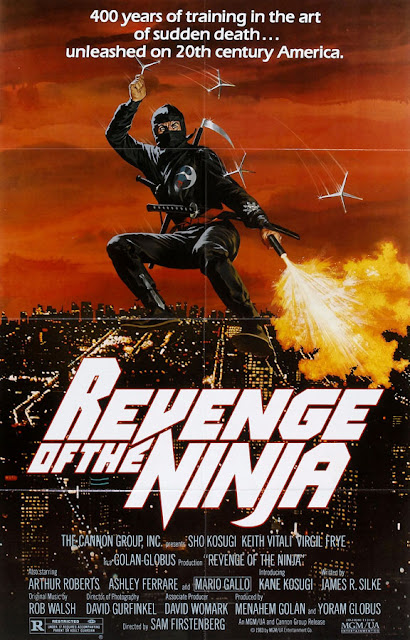(R, Cannon Films, 108 mins., theatrical release date: September 1985)
"Bolero 2: Emmanuelle 4.5." That is my pet name for Mata Hari.
The last time I reviewed a shameless softcore period piece starring an over-the-hill sex symbol, I felt like giving up on The Cannon Group entirely. There's only so much idiocy and bad judgment one can take from Golan & Globus before you rue the day you decided to investigate their track record for yourself. And the next time I revisit Electric Boogaloo: The Wild, Untold Story of Cannon Films, I'm going to wince from the experiences of watching Bolero, The Apple and now Mata Hari uncontrollably.
With Bo Derek no longer interested in keeping ties with Cannon, the tacky twosome turned to her Dutch doppelganger, Sylvia Kristel, to satiate their opportunism. In the wake of 1981's Lady Chatterley's Lover, which reunited her with the director who stripped her to fame back in 1974...well, that D.H. Lawrence adaptation didn't get released in America until May 1982. Preceding Lady Chatterley's Lover theatrically was Kristel's appearance in the movie which kicked down the doors for glut of teenage sex movies to come, Private Lessons.
The multilingual model with the 164 I.Q. went Hollywood as the duplicitous French servant who romances/titillates a 15-year-old rich boy. Private Lessons was a sleeper hit even with Kristel being body-doubled, thus the European embodiment of adult-minded erotica became another oversexed pawn in a more disreputable liaison. Kristel's popularity encouraged Louisa Moritz, Joan Collins and Jacqueline Bisset to also act out variations on this cougar cliché. By the time a real movie of quality, Risky Business, arrived to put its predecessors to shame, Kristel came full circle with a "special appearance" as a sex education teacher in Private School.
As I mentioned previously, Cannon thought about making a follow-up to The Last American Virgin which would've had Kristel getting conquered by the three boors. It never happened, mainly because I would imagine the idea of Lawrence Monoson finding solace in Sylvia Kristel's bosom would've been a straight-up copy of Private Lessons. And we already had that with My Tutor and They're Playing with Fire, the latter starring Eric "Philly" Brown himself opposite Cannon regular Sybil Danning.
Instead, in 1985, Hot Chili became Virgin's unofficial sequel by virtue of having Joe Rubbo and Louisa Mortiz star in it (as well as plagiarism from all of the previous Lemon Popsicle movies). Sylvia Kristel, meanwhile, found herself in a more typical refuge for aging if bankable screen sirens working under Golan-Globus: The Out-of-Costume Drama.
The legend of Mata Hari, the sensual entertainer who was tried and executed for enemy espionage during WWI, became the basis for Kristel's second Cannon vehicle. Whereas Bolero invoked and sullied the prestige of silent film star Rudolph Valentino, Mata Hari makes hash of a role which was previously handled by Greta Garbo, Marlene Dietrich (see Dishonored) and Jeanne Moreau. Poor Kristel may look beautiful in the buff, director Curtis Harrington pitching in a handful of titillating diversions from the mind games surrounding Lady MacLeod. But she cannot command the screen in any other manner besides undressed, and this '70s sex kitten is reduced to a dust bunny in the 1980s.
There's no tragedy in the unraveling of how Mata Hari is played by both the French and German armies at the moment their top commanders catch her eye in a museum. There's nothing to invest in the estranged friendship between these sporting rivals, Karl von Bayerling (Christopher Cazenove) and Georges Ladoux (Oliver Tobias). And any chance for engaging with the various assassinations, mutinies and counterattacks is thrown way off balance by both a sloppy script and the film's awareness of its own sexploitative sensationalism.
So when Mata Hari makes love to a solider on the train to Berlin, they are rudely interrupted by a poison blow dart landing in the stranger's back. Her interrogations lead her to cross paths with nefarious Fraulein Doktor (Gaye Brown), who specializes in psychological manipulation at the cost of Mata Hari's romantic interests with von Bayerling. The disgraced dancer is then pinballed between working for von Bayerling and Ladoux, all the while antsy viewers anticipate the latest flash of skin from Kristel, whether it be from masturbating in the bathtub (replete with keyhole-peeping imbeciles) or a topless fencing bout against a spitfire contessa.
By the time Mata Hari has been row-boated to Java by the amorous von Bayerling, learns about the magic of invisible ink and makes her way across German battlefields to rescue her mortally wounded paramour, Fraulein Doktor has constructed a time-bomb which Mata Hari races to defuse. Of course, she is captured by the French and awaits her inevitable martyrdom in the firing line. Yet the plotline is overstuffed and so portentous that it stomps all over any chances for tension or pathos. What should be a resonant conclusion turns out to be one more bogus filmmaking choice, which is nothing new in the dumpster files of Golan-Globus.
Despite his renown in independent horror circles, Curtis Harrington wound up on the opposite side of the coin compared to Tobe Hooper. Whereas the Texas Chainsaw Massacre auteur invested his trio of Cannon productions with all manner of perverse idiosyncrasies, Harrington (Queen of Blood, What's the Matter with Helen?, Ruby) fails to liven up the movie enough to distract viewers from the locked-down locations (Budapest badly doubling for all European locales) and perfunctory cinematography (by Cannon regular David Gurfinkel of The Apple and Revenge of the Ninja). Under his auspice, Harrington gives Mata Hari a chintzy look which is not helped by the unwieldy performances and the undependable plot.
I mostly concluded that Mata Hari was basically a romance novel heroine writ mythical, torn between two lovers and helpless against the dogs of war. Take out the erotica and all that's left is but a Stephenie Meyer prototype. If you want a shorter, sexier take on this material, watch the middle vignette of Second Time Lucky instead.









